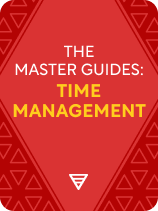

This article is an excerpt from the Shortform book guide to "The Master Guides: Time Management" by Shortform. Shortform has the world's best summaries and analyses of books you should be reading.
Like this article? Sign up for a free trial here.
Are you struggling to manage your time effectively? Do you find it challenging to set goals and priorities amidst a sea of tasks?
Time management is crucial for personal and professional success. Experts agree that focusing on one or two major priorities daily, aligned with larger goals, is key. This approach helps you make the most of your time and achieve better results.
Read more for advice from time management experts on how to set goals and priorities effectively.
Set Priorities and Goals
To make the best use of your time, you first have to decide what you’re using it for. There’s a strong link between setting goals and priorities. Time management experts generally agree that, instead of trying to do too many things at once, you need to focus on one or two major priorities every day and that these priorities should be in service to a larger goal. We’ll explain why and help you determine what your priorities should be.
In Eat That Frog!, Brian Tracy frames the importance of having a singular focus in terms of the 80/20 Rule, which states that 20% of the tasks you perform account for 80% of your results. Therefore, if you have five things to do, completing your single most important task will have a greater impact than the other four combined. Each of your tasks may take the same amount of time, but one will generate more value than all the others. Tracy says to resist the temptation to shrink your to-do list by getting your easy tasks out of the way first. Instead, before you start any task, ask whether it’s a top 20% or bottom 80% task, and only do it if it’s in the top 20%. Don’t work on any low-value tasks until you’ve completed the top tasks on your list.
So how do you figure out what your top task is? In The One Thing, Gary Keller writes that you should ask this focusing question: “What’s the one thing I can do that will make everything else easier or unnecessary?” The focusing question takes two forms—a big-picture and a small-focus question: 1) “What’s the one thing I’m working toward?” and 2) “What’s the one thing I should be doing right now?” The first question determines your purpose, while the second determines the most important immediate action toward attaining it. These questions let you ignore the vast array of things you could do and focus on the right things, recognizing that all tasks aren’t equally important.
| What to Do, What to Do? More than likely, you have a mountain of tasks you’re trying to juggle and limited time in which to do them. Suppose, for example, that you’re a sales rep who’s angling for a promotion at work. You’re trying to woo an important new client while responding to never-ending emails from your colleagues, trying to schedule a dental appointment, and wanting to catch up on your favorite podcasts. With so much on your plate at one time, it may feel like nothing gets the attention it deserves. So ask the big question: “What am I working toward?” In this example, it would be your promotion. Next, ask the focusing question: “What should I be doing right now to bring me closer to that goal?” In this case, that would be calling your important client, since of all the tasks listed above, it’s the most closely tied to your promotion potential. Your emails may seem important, your dental appointment surely is important, and listening to your podcasts may help you unwind, but they should all be scheduled around whatever tasks support your primary goal. |
The problem is that in the press of daily life, there are so many potential tasks that it’s hard to weed out the most important ones. In First Things First, Stephen R. Covey provides a helpful diagram to evaluate the tasks on your list based on significance and pressure.
A task can be significant, pressing, both, or neither. In Covey’s method of time management you only do significant tasks, instead of spending time on those that are merely pressing. Tasks that aren’t significant, such as responding to emails or binging on your favorite podcasts (Zones 3 and 4 in the graph above) add little value to your life, so you should limit the time you spend on those. Also, while activities that are both significant and pressing are inevitable—such as fixing a flat tire or going to the dentist—aim to spend most of your time on tasks that are merely significant (Zone 2). The key is to recognize when seemingly pressing tasks like responding to emails aren’t significant and stop.
One key tool you can use to free your time is delegation. In The 7 Habits of Highly Effective People, Covey writes that if you have the option, use delegation as a short-term time investment to give you more time for important activities. However, telling people what to do and how to do it isn’t effective—you lose time because you’re too busy supervising. Instead, Covey prefers what he calls “Stewardship” delegation, which focuses on results instead of methods. This means that you trust other people to handle the tasks on your to-do list while giving them time and space to help work toward your goals as they see fit.

———End of Preview———
Like what you just read? Read the rest of the world's best book summary and analysis of Shortform's "The Master Guides: Time Management" at Shortform.
Here's what you'll find in our full The Master Guides: Time Management summary:
- Experts’ advice for prioritizing what you spend your time on
- How to use bullet journals to track your time
- The emotional culprit behind procrastination






